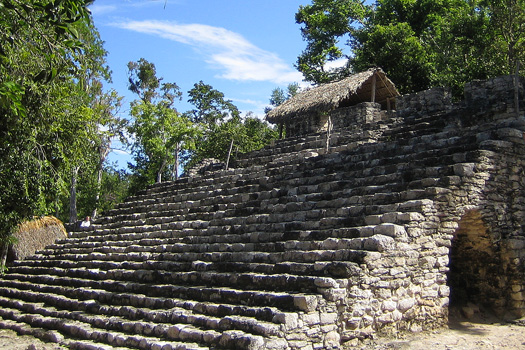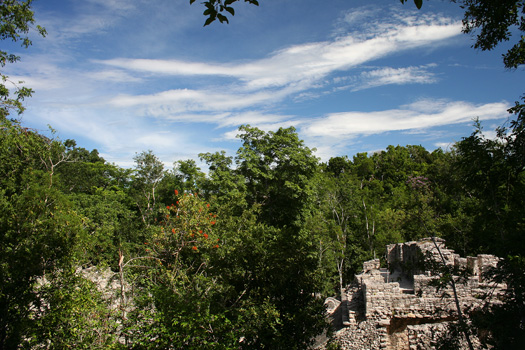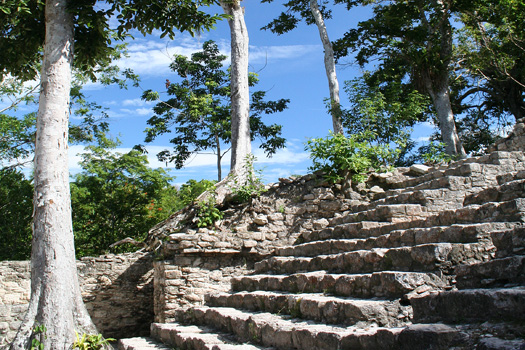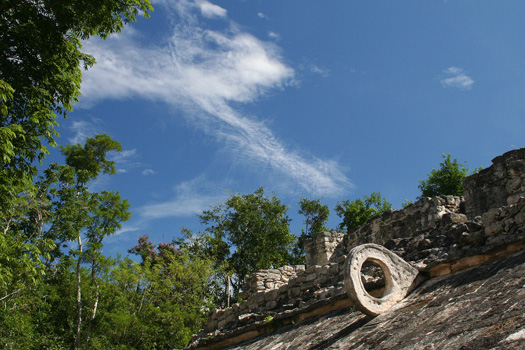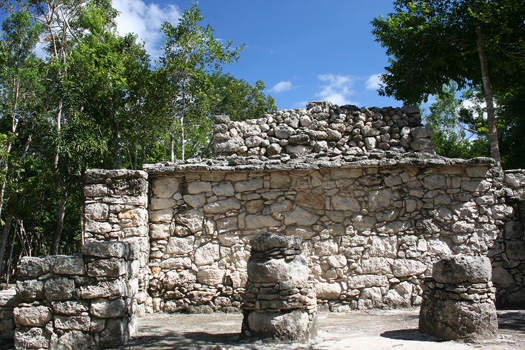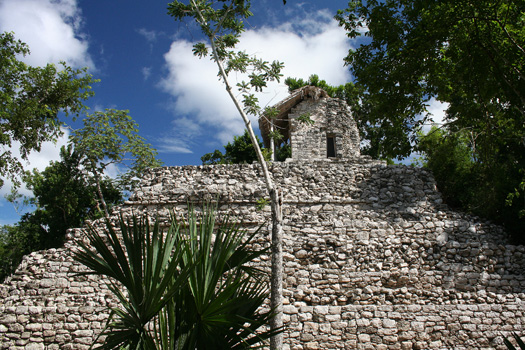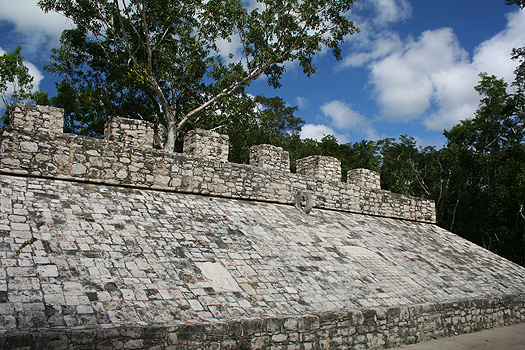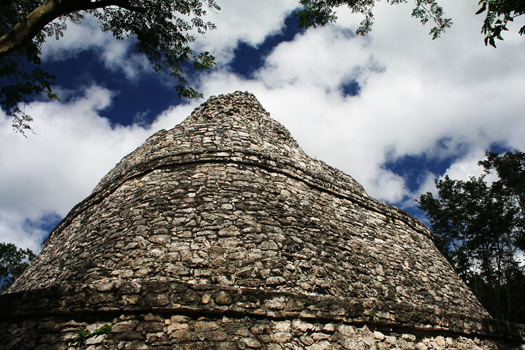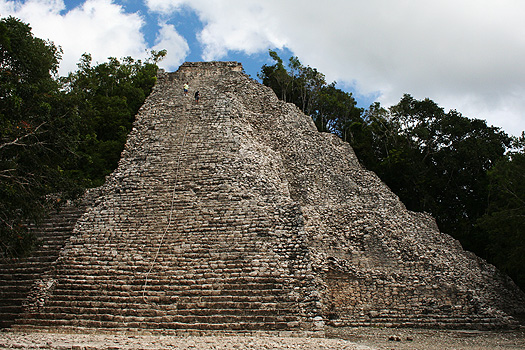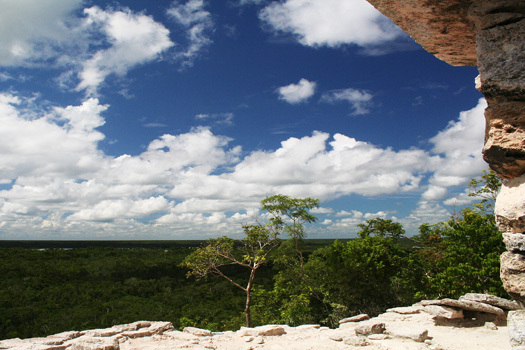2006 AD: The Maya ruins of Cobá, México
The ancient city of Cobá is positioned at a major junction of elevated limestone causeways, called sacbé. These roads were built for trade and general travel by foot and some would run for about 75 kilometres as far away as the settlement of Yaxuná, another important centre for religion and commerce in the west, and the seaport of Tulum in the east. Established around 100 AD near five large lagoons the site of Cobá - apparently meaning Wind Swept Water - was not abandoned until the arrival of the Spanish conquistadores at the start of the sixteenth century. It once sprawled over 30 square kilometres and could have accomodated up to 100,000 people.
The city came to prominence as a centre of trade for some of the great lowland cities in what is now Mexico and Guatemala in the Late Classic Maya period around 800 when the largest of the pyramids and temples were built. Further developments in about 1200 were typically influenced by a similar style of building as that found in Tulum. It is believed that the city-state was ruled by a succession of Queens for a considerable time.
Please browse to http://www.skylla.co.uk
if the map does not appear in a few seconds.
The ancient Maya believed that the most recent rebirth or creation of the universe was on 11 August 3114 BC and the next one being on 21 December 2012. Their universe was recreated an infinite number of times and one of the stelae at Cobá records the longest date known in the Maya Long Count calendar system corresponding to many, many millions of epochs of many millions of years.
Published on 11.12.2006 by Sjaak van der Sar – Leave critique or other comments

